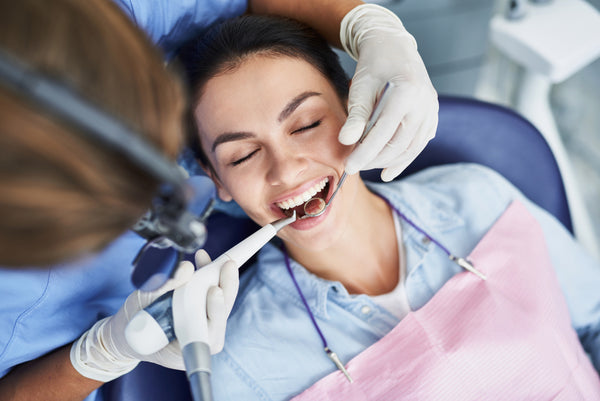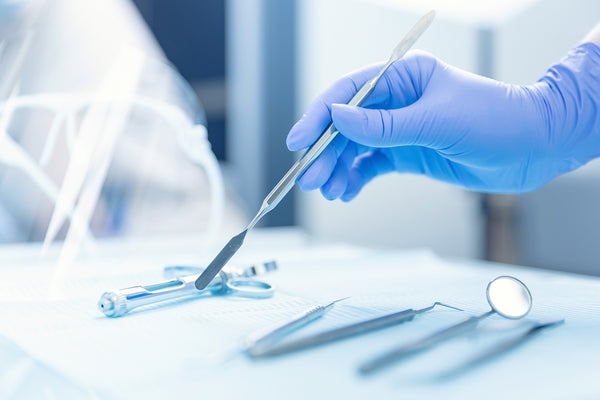
The Importance of Sterilization in Dental Practices
As a dentist, your foremost priority is to ensure the highest standard of patient care. This means that in addition to your clinical expertise and chairside manner, you must also prioritize infection control measures to protect your patient's health and well-being. Among these measures, sterilization assumes a pivotal role in maintaining a safe and hygienic environment within your dental practice.
What is Sterilization in Dentistry?
Sterilization is the systematic process of eliminating all forms of microbial life from instruments, equipment, and surfaces used during dental procedures. It helps prevent the transmission of infectious agents between patients and dental professionals, thereby safeguarding patient health and maintaining a hygienic environment within the dental office.
Sterilization goes beyond mere cleaning or disinfection; it involves the complete destruction or removal of all microorganisms, including bacteria, viruses, fungi, and spores, that may be present on dental instruments or surfaces. Achieving sterilization ensures that these items are free from any potentially harmful pathogens, reducing the risk of cross-contamination and infection transmission during patient care.
How Does Sterilization Happen?
The Centers for Disease Control and Prevention (CDC) provides a number of best practices and process to keep equipment clean and sterilized, as shown below:
Cleaning
According to the CDC, cleaning should precede all disinfection and sterilization process. This process gets rid of any visible debris, organic material, or contaminants from a dental device or instrument. Cleaning is effective because residual debris can interfere with the sterilization process and compromise its efficacy.
Packaging
The devices or instruments are then packaged in specialized sterilization pouches or wraps designed to maintain their sterility until they are ready for use. Proper packaging helps protect sterilized instruments from contamination during storage and transportation within the dental practice.

Sterilization
The sterilization process itself may involve various methods, including steam sterilization, chemical sterilization, dry heat sterilization, or ethylene oxide sterilization. Each method has its pros and cons, and the choice of sterilization method may depend on factors like instrument compatibility, material composition, and regulatory requirements.
Monitoring
Throughout the sterilization process, it is essential to monitor critical parameters such as time, temperature, pressure, and chemical agents to ensure that sterilization conditions are met and maintained. Regular monitoring helps verify the effectiveness of the sterilization process and identify any deviations or failures that may occur.
Storage
Once sterilized, dental instruments and equipment should be stored in a clean and controlled environment to maintain their sterility until they are needed for patient care. Proper storage practices help minimize the risk of contamination and ensure that sterilized items remain safe for use.
Why is Sterilization Important in Dental Practices?
Sterilization is an indispensable aspect of dental care. It helps maintain a safe and hygienic environment for both patients and dental professionals. Here are four key reasons why sterilization is of utmost importance in dental practices:
Prevents the Transmission of Infection
The oral cavity is teeming with bacteria and other microorganisms, some of which can cause serious infections if transmitted to other patients. Without proper sterilization, dental instruments and equipment can become contaminated with these pathogens, posing a risk of infection transmission to subsequent patients. Sterilization effectively eradicates these harmful microorganisms. As a result, it minimizes the risk of cross-contamination and helps to maintain a safe and hygienic environment within the dental practice.
Safeguards Patient Health

Patients trust dental professionals to provide safe and effective care, and proper sterilization is essential for upholding this trust. Sterilization helps minimize the risk of patient exposure to infectious agents that can lead to serious health consequences, including oral infections, systemic infections, and even life-threatening conditions in vulnerable individuals. When you prioritize sterilization protocols, you illustrate your commitment to patient safety and contribute to the delivery of high-quality dental care.
Maintain Regulatory Compliance
Your dental practice is subject to strict regulatory standards and guidelines set forth by organizations like the Food and Drug Administration (FDA), the CDC, and the American Dental Association (ADA). These regulations outline specific requirements for infection control practices, including sterilization protocols, to ensure patient safety and public health. You’ll need to adhere to the regulatory standards to maintain licensure, accreditation, and compliance with legal obligations. Failure to do so can attract fines, legal penalties, and reputational damage.
Upholding Professional Integrity
Sterilization is not just a matter of regulatory compliance and patient safety but also a reflection of professional integrity within the dental profession. As dental professional, you have a moral and ethical responsibility to prioritize patient well-being and adhere to the highest standards of care. Proper sterilization practices demonstrate your commitment to professionalism, excellence, and ethical conduct, reinforcing the trust and confidence that patients place in their dental providers.
Protects Staff Members
Dental professionals and support staff routinely handle sharp instruments and come into contact with patients' soft tissue and bodily fluids. This puts them at risk of exposure to bloodborne pathogens like HBV, HCV, and HIV. Without proper sterilization, contaminated devices and tools can pose a significant occupational safety hazard to dental staff members. Proper sterilization practices also contribute to a culture of safety within the dental practice, where staff members are trained to recognize and mitigate potential hazards.
Invest in High Quality Dental Tools and Devices

Dental tools and devices are not created equally – some are better than others when it comes to ensuring effective sterilization practices. High-quality dental ones are designed to withstand the rigors of sterilization processes, including high temperature and pressure. This means they can be cleaned, disinfected, and sterilized between patient uses effectively. Investing in quality dental devices and tools can therefore:
- Enhance your infection control protocols
- Minimize the risk of cross-contamination
- Uphold the highest standards of patient care
Quality dental devices and tools also contribute to the efficiency and effectiveness of dental procedures. They enable you to deliver superior clinical outcomes while minimizing the potential for errors or complications.

